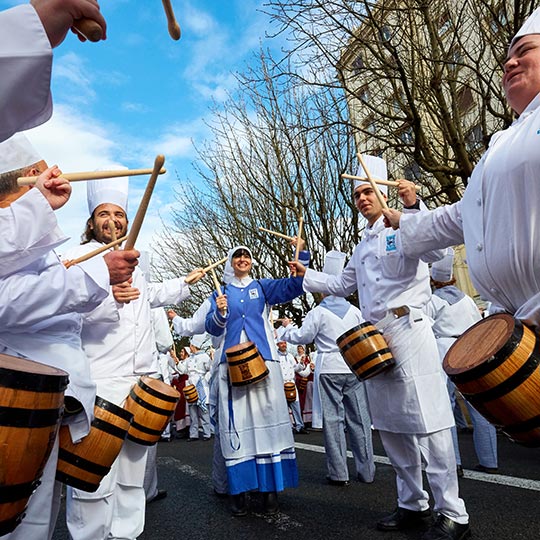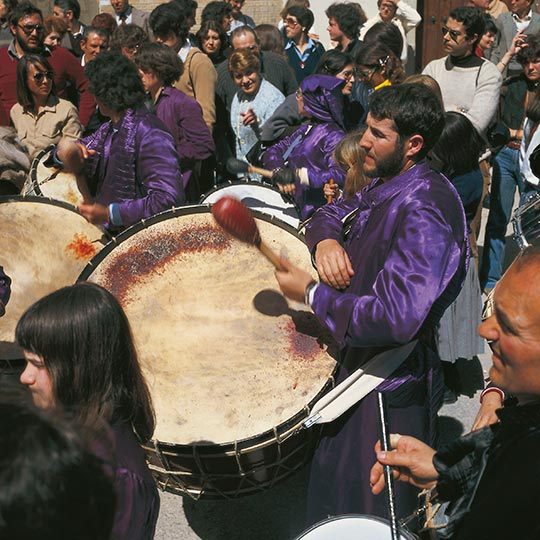The tamborradas of San Sebastián began in 1881 when the City Council presented the city’s culinary societies with the drums and uniforms of the Napoleonic troops in order to organise a group parade. The tamborrada of Calanda, in Teruel, is said to have begun in 1627 when a friar suggested people bang pots and pans during the processions. In Hellín, Albacete, the tamborradas began in the 18th century when the Procesión de los Azotes, a parade of flagellants, was led by musicians and drummers. These are just a few of the examples of towns where the history and tradition of the tamborradas have survived to our time.









